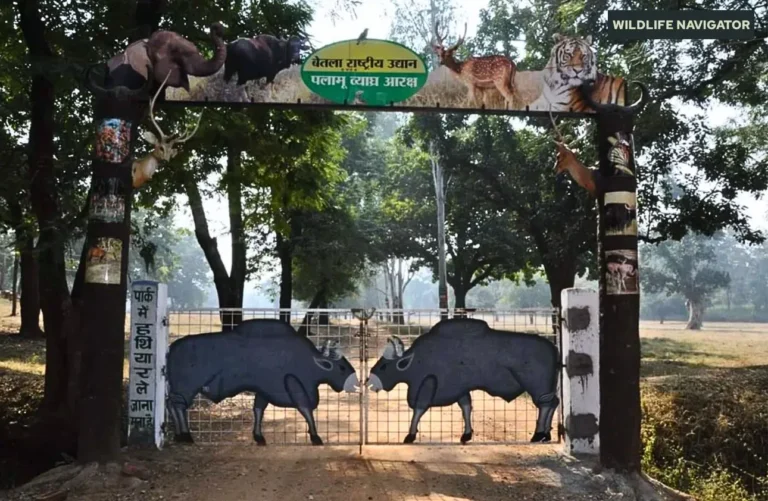Gaur | Bos Gaurus | Indian Gaur: Asia’s Majestic Wild Bison

The Gaur (Bos gaurus), popularly known as the Indian Bison, is the largest and most powerful species of wild cattle in the world. Standing tall with a commanding presence, this gentle giant is an icon of strength and resilience in the forests of South and Southeast Asia.
Unlike domestic cattle, the Gaur is distinguished by its massive size, muscular hump, and striking dark-brown coat with contrasting white “stockings” on its legs.
Gaurs are primarily distributed across India, Nepal, Bhutan, Bangladesh, Myanmar, Thailand, Cambodia, Laos, Vietnam, and Malaysia. Among these regions, India holds the strongest population, with frequent sightings in national parks such as Nagarhole, Bandipur, Kanha, and Periyar.
Despite their size and strength, Gaurs are shy animals that avoid humans but play a vital ecological role in their habitats.
1. Taxonomy, Species & Subspecies
The Gaur (Bos gaurus) belongs to the family Bovidae, which also includes domestic cattle, buffalo, antelopes, and goats. Within the animal kingdom, it is classified under Order Artiodactyla, covering even-toed ungulates, and Genus Bos, known for robust, horned bovines. Among all wild cattle, the Gaur stands out as the heaviest and tallest species, surpassing even the wild water buffalo in size.
Scientists recognise three primary subspecies of the Gaur:
1.1 Indian Gaur (Bos gaurus gaurus)
The Indian Gaur is the largest and most widespread subspecies, predominantly found across the Indian subcontinent. It inhabits forests of the Western Ghats, Central India, and northeastern states. Known for its impressive size, dark brown coat, and white leg markings, this subspecies plays a critical ecological role as a keystone herbivore in India’s national parks such as Nagarhole, Bandipur, and Periyar.
1.2 Burmese Gaur (Bos gaurus readei)
The Burmese Gaur was historically found in Myanmar and parts of Indochina, though populations are now rare due to habitat loss and hunting. Slightly smaller than the Indian Gaur, it is adapted to tropical and subtropical forests, but faces significant conservation challenges. Protecting remaining habitats is vital to prevent local extinction.
1.3 Malayan Gaur / Seladang (Bos gaurus hubbacki)
The Malayan Gaur, also called Seladang, is distributed in Thailand, Malaysia, and surrounding regions. Slightly smaller than its Indian counterpart, it is adapted to evergreen and semi-evergreen forests of Southeast Asia. Though less studied, this subspecies contributes to forest ecology by grazing and seed dispersal, helping maintain vegetation balance.
The Gaur shares evolutionary roots with domestic cattle (Bos taurus) and zebu (Bos indicus), with occasional hybridisation near human settlements. Its closest wild relatives include the wild yak and banteng, yet Gaurs remain the largest and most imposing wild cattle.
Taxonomically, Gaurs are often confused with bisons, hence the popular nickname “Indian Bison.” However, they are not true bisons, as bisons belong to the genus Bison. Understanding the Gaur’s taxonomy and subspecies not only distinguishes them from other wild cattle but also highlights the importance of regional conservation strategies to preserve genetic diversity and ensure the species’ long-term survival.
2. Physical Characteristics & Adaptations
The Gaur is often described as the gentle giant of the forest, commanding attention with its sheer size and striking appearance. It is the largest wild bovine in the world, with adult males standing between 1.7 to 2.2 meters at the shoulder and weighing anywhere from 600 to 1,500 kilograms. Females are generally smaller but still remarkably robust, making the species one of the most powerful herbivores in Asia.
Their body is covered with a dark brown to blackish coat, which becomes darker in males as they mature. The most recognisable feature is the contrasting white stockings on all four legs, a sharp visual marker against their muscular build. A pronounced dorsal ridge runs along the back, culminating in a high, arched hump above the shoulders, adding to their imposing frame.
Both males and females possess curved, crescent-shaped horns, typically measuring 60–115 cm in length. The horns are yellowish at the base, darkening to black at the tips. These horns not only serve as a defence mechanism but also play a role in dominance displays during mating contests.
Adaptations have made the Gaur well-suited for survival in dense forests and hilly terrains. Their strong jaw and broad muzzle allow them to graze on coarse grasses and browse on shrubs, bamboo, and tree bark. Their massive lungs and strong limbs enable them to climb steep terrains with ease. Despite their bulky size, Gaurs are surprisingly agile and can run at high speeds to escape predators.
These physical traits, combined with their natural alertness, make the Gaur a formidable species, respected by both predators and humans.
3. Habitat, Range & Ecosystem Role
3.1 Habitat
The Gaur’s distribution stretches across South and Southeast Asia, with India being its stronghold. Nearly 85% of the global Gaur population is found in India, particularly in the Western Ghats, Central India, and the northeastern states. Beyond India, populations occur in Nepal, Bhutan, Bangladesh, Myanmar, Thailand, Cambodia, Laos, Vietnam, and the Malaysian Peninsula. However, in many of these regions, numbers have drastically declined due to habitat fragmentation and hunting pressure.
Gaurs prefer tropical and subtropical forests, both dry and moist deciduous as well as evergreen forests. They thrive in areas with abundant water sources, tall grasses, bamboo thickets, and salt licks, which are vital for their mineral intake. They are also found in hilly and undulating terrains, where their muscular build and adaptability help them navigate steep landscapes. In some regions, Gaurs venture close to agricultural fields, leading to occasional human–wildlife conflict.
3.2 Ecosystem Roll
Ecologically, the Gaur plays a keystone role in maintaining forest balance. As large herbivores, they control vegetation growth, preventing the over-dominance of certain plant species. Their foraging also helps in seed dispersal, promoting forest regeneration. Additionally, Gaurs serve as a primary prey base for apex predators like tigers and leopards. The presence of healthy Gaur populations is often considered an indicator of a thriving forest ecosystem.
Sadly, shrinking habitats due to deforestation and human encroachment are confining Gaurs into smaller, fragmented pockets, reducing their ecological effectiveness. Protecting their range is not only critical for the survival of this species but also for the broader biodiversity that depends on healthy forest ecosystems.
4. Behaviour, Lifestyle & Social Structure
Despite their imposing size and formidable appearance, Gaurs are generally shy, peaceful, and non-aggressive animals unless provoked. They are mostly diurnal, preferring to feed during the early morning and late afternoon. However, in areas with frequent human activity, Gaurs may shift to nocturnal behaviour to avoid disturbances, showing their adaptability to changing environments.
Gaurs live in small to medium-sized herds, usually comprising 8 to 40 individuals, though larger groups have been recorded in undisturbed forests. A typical herd consists of adult females, calves, and sub-adults, while dominant adult bulls join the herd during the mating season. The social structure is matriarchal, led by an experienced cow that guides the group to feeding grounds and water sources.
Adult bulls often live solitary lives or form bachelor groups of a few individuals. These solitary males are sometimes seen shadowing herds, especially during the breeding season. Hierarchy within the group is maintained peacefully most of the time, but males may engage in displays of dominance such as horn-clashing or vocalisations during competition for mates.
Gaurs are territorial to a certain extent, using their scent-marking behaviour to establish presence in a particular area. Despite their bulk, they are surprisingly agile and can move swiftly through dense vegetation or across hilly terrain. Their natural alertness makes them difficult prey, and only tigers are known to regularly hunt adult Gaurs, while calves may fall to leopards or wild dogs.
Overall, the Gaur’s behaviour reflects a balance of strength, social unity, and adaptability, making it one of the most fascinating herbivores in Asian forests.
5. Diet & Feeding Habits
The Gaur is a strict herbivore, relying entirely on the lush vegetation of forests for its survival. Its diet is diverse, consisting mainly of grasses, young shoots, bamboo, fruits, and leaves of shrubs and trees. Gaurs are also known to consume tree bark and herbs, particularly in the dry season when tender grass is scarce. Their broad muzzle and strong jaws allow them to handle coarse and fibrous vegetation that many smaller herbivores cannot digest.
Foraging usually occurs during the cool hours of early morning and late evening, when herds move together to graze in open meadows or along forest edges. In human-disturbed landscapes, Gaurs have shown remarkable adaptability by turning nocturnal feeders, venturing into agricultural fields at night in search of crops like maize, paddy, and sugarcane. While this opportunistic behaviour helps them survive, it also often brings them into conflict with farmers.
Seasonal availability of food strongly influences their feeding habits. During the monsoon and post-monsoon months, Gaurs primarily graze on tender grasses and fresh foliage. In the dry summer months, they switch to browsing shrubs, bamboo, and dry leaves, supplementing their mineral requirements with natural salt licks found in forests.
As bulk feeders, Gaurs play an important ecological role by regulating plant growth and promoting seed dispersal through their dung. Their feeding behaviour helps maintain the balance of vegetation in forests, ensuring that no single plant species dominates the ecosystem.
Thus, the Gaur’s diet reflects not only its adaptability to seasonal changes but also its importance as a keystone herbivore in maintaining healthy and diverse forests.
6. Reproduction & Life Cycle
The Gaur has a seasonally influenced reproductive cycle, though exact timing can vary depending on regional climate and food availability. In India, breeding often peaks during the dry season between December and June, when herds are more active and food is relatively abundant. Adult bulls engage in mating displays, using their size and horns to assert dominance over rivals. These contests are generally ritualistic, involving horn-clashing and pushing, and rarely result in serious injury.
Once mating occurs, the gestation period for a female Gaur lasts approximately 270 days, culminating in the birth of a single calf. Twins are extremely rare. Calves are usually born with a reddish-brown coat, lighter than that of adults, and are well-camouflaged in the forest. They remain close to their mothers for protection, gradually joining the herd as they grow.
Young Gaurs grow rapidly due to their strong physique, with males attaining full size around 5–6 years and females slightly earlier. Sexual maturity is typically reached by 3–4 years, allowing them to join the reproductive cycle. Adult Gaurs exhibit a long lifespan, living up to 20–25 years in the wild and slightly longer under human care in protected areas or captivity.
Herd dynamics are crucial during the reproductive phase. Adult cows provide guidance and protection to calves, while dominant bulls may temporarily join herds to ensure successful mating. Calf survival is often threatened by predators such as tigers and leopards, making herd vigilance essential for the continuation of the species.
The Gaur’s life cycle reflects resilience and adaptability, with strong herd structures and reproductive strategies that ensure the survival of this majestic species in the challenging environments of South and Southeast Asia.
7. Conservation Status, Threats & Protection
The Gaur is currently classified as Vulnerable on the IUCN Red List, reflecting its declining population across much of its natural range. While India holds the largest and most stable populations, numbers in Southeast Asia have plummeted due to habitat loss, hunting, and human encroachment. Conservation of this species is crucial not only for its survival but also for the health of the forest ecosystems it inhabits.
The primary threats to Gaurs include:
- Habitat loss and fragmentation due to deforestation, agriculture, and urban expansion.
- Poaching and illegal hunting for meat, horns, and body parts.
- Conflict with humans, especially when herds raid agricultural fields.
- Diseases transmitted from domestic cattle, which can weaken wild populations.
- Predation, mainly on calves, by tigers and leopards, although this is a natural ecological factor.
Conservation measures have been implemented to safeguard the species. In India, Gaurs are protected in numerous national parks and wildlife sanctuaries, including Nagarhole, Bandipur, Periyar, Kanha, and Tadoba-Andhari. Project Tiger indirectly benefits Gaur populations by preserving forest habitats that sustain both tigers and their prey. In Southeast Asia, protected reserves and anti-poaching initiatives aim to maintain small, fragmented populations, though challenges remain significant.
Community-based conservation programs also encourage coexistence by mitigating crop raiding and promoting eco-tourism. These programs help generate local awareness and incentives for protecting Gaurs.
Protecting the Gaur is not just about preserving a single species; it is about maintaining biodiversity, forest integrity, and ecological balance. Continued efforts in habitat preservation, anti-poaching measures, and sustainable human-wildlife coexistence are vital for the survival of this iconic species.
8. Cultural, Mythological & Human Significance
The Gaur has held a special place in human culture and folklore for centuries, symbolising strength, power, and resilience. In India, it is regarded as the state animal of Goa and Bihar, highlighting its importance as a national symbol of wildlife heritage. Tribal communities across its range often view the Gaur with reverence, incorporating its imagery in local art, stories, and rituals.
In folklore and mythology, the Gaur represents grace and vitality, often associated with forest strength and the protective spirits of nature. Stories from tribal regions describe the Gaur as a guardian of the forest, emphasising its role in maintaining ecological balance. Its imposing presence and calm demeanor have made it a symbol of majestic wilderness in literature and wildlife photography.
Humans interact with Gaurs in multiple ways. In protected areas, wildlife enthusiasts and eco-tourists actively seek sightings of this giant, promoting wildlife tourism and conservation awareness. Conversely, Gaurs sometimes raid crops, causing conflict with farmers. These interactions have led to efforts aimed at human-wildlife coexistence, such as constructing barriers, providing alternative fodder sources, and implementing community-based conservation programs.
The Gaur’s significance is thus twofold: it is both a cultural icon and a key ecological species. Preserving it ensures the continuation of traditional reverence and maintains the health of forests where it plays a vital ecological role. Its presence reminds humans of the importance of living in harmony with nature and respecting the wild creatures that share our world.
9. Interesting Facts & Best Places to See Them
The Gaur is one of the most fascinating wild bovines in the world, not only because of its size but also for its unique behaviours and ecological role. Adult males can weigh up to 1,500 kilograms, making them the largest wild cattle species, while females are slightly smaller but still formidable. Despite their massive bulk, Gaurs are agile climbers and fast runners, capable of navigating dense forests and hilly terrains with surprising ease.
Some interesting facts about Gaurs include:
- They have three recognised subspecies:
- Indian Gaur (Bos gaurus gaurus) – predominant in India and Nepal.
- Burmese Gaur (Bos gaurus readei) – rare, mostly in Myanmar.
- Malayan Gaur or Seladang (Bos gaurus hubbacki) – found in Thailand and Malaysia.
- Newborn calves have a reddish-brown coat that darkens with age.
- They form herds led by dominant females, with adult bulls often living separately.
- Gaurs are important keystone species, shaping forest ecosystems through grazing and seed dispersal.
For wildlife enthusiasts hoping to spot Gaurs in their natural habitat, some of the best national parks and sanctuaries include:
- India: Nagarhole, Bandipur, Kanha, Periyar, Tadoba-Andhari, and Silent Valley.
- Nepal: Chitwan National Park and Bardia National Park.
- Bhutan: Jigme Dorji and Royal Manas National Parks.
- Thailand & Malaysia: Khao Yai National Park and Taman Negara.
Travel tips: Early morning or late afternoon safaris provide the highest chances of sightings. Observing Gaurs quietly from a distance is recommended, as they are shy but can become aggressive if startled.
With their combination of strength, elegance, and ecological importance, Gaurs continue to captivate nature enthusiasts, photographers, and conservationists alike, making them a must-see species for anyone exploring the forests of South and Southeast Asia.





